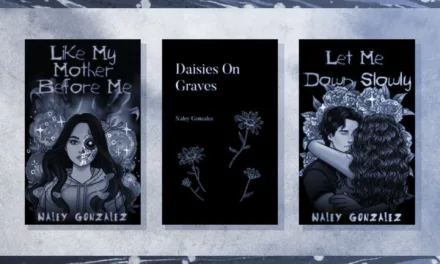
How to Come Up with a Theme for Your Story

When you read a story that lingers in your mind long after you turn the final page, chances are, that story had a powerful theme at its core. A theme is the beating heart of any great narrative, the underlying message or insight that gives the story its depth and resonance. It’s the thread that weaves through every scene, every character arc, and every plot twist, imbuing the story with meaning and purpose.
To produce a mighty book, you must choose a mighty theme. No great and enduring volume can ever be written on the flea, though many there be that have tried it.
Herman Melville
But how do you come up with a compelling theme for your story? It’s a question that plagues many writers, both new and experienced alike. The good news is that developing a strong theme is a skill that can be learned and honed over time, so let’s explore some practical strategies and techniques for identifying, developing, and integrating a theme into your writing.
What is a theme?
Before we dive into the specifics of how to develop a theme, let’s take a moment to define what a theme actually is. In the simplest terms, a theme is the central idea or underlying meaning of a story. It’s the insight or message that you want to convey to your readers through the characters, plot, and symbolism of the narrative.
It’s important to understand the difference between theme and plot. The plot is the sequence of events that unfold in your story, while the theme is the underlying message or insight that these events convey. Themes are often universal concepts that resonate with readers across different cultures and times, like love, betrayal, good vs. evil, coming of age, and the human condition, but they can also be story specific. A strong theme can add depth and resonance to your story, making it more meaningful and memorable.
How to come up with a theme
Now that we’ve explored what a theme is and why it’s so crucial to your story, let’s dive into some practical techniques for coming up with one. Whether you’re starting a new project or trying to uncover the underlying meaning in a story you’ve already begun, these strategies will help you identify and refine the central ideas that drive your narrative.
Start with character conflict
One effective way to uncover your story’s theme is to examine the central conflict faced by your protagonist. What is the main struggle or challenge that your character must overcome? Is it an external conflict, like a battle against a powerful adversary or a struggle to survive in a hostile environment? Or is it an internal conflict, such as a moral dilemma or a battle with their own fears and doubts?
Go back to basics and revisit the GMC formula for character development: Goal, motivation, conflict. What does your character want? What pushes them to get it? What gets in their way? Are there any universal experiences in your character’s development that can feed into an overarching narrative theme?
Explore universal themes
Universal themes are recognisable in almost all media. Some examples include love, death, coming of age, good vs. evil, and justice. These themes have endured because they speak to fundamental aspects of the human experience that transcend time and culture. Consider which universal themes might be relevant to your story and how you can explore them through your characters and plot.
Analyse classic literature and modern stories to see how these themes are used effectively. Pick a favourite book or movie and identify its central theme. Consider how the theme is woven throughout the narrative and how it resonates with you as a reader or viewer.

Consider genre-specific themes
Another approach is to look for themes that are specific to your story’s genre, setting, or subject. For example, a romance novel might explore themes of love, commitment, and sacrifice, while a science fiction story might delve into the implications of advanced technology or the nature of reality. A historical fiction novel set during a particular time period might examine themes related to social class, gender roles, or political upheaval.
By identifying the themes that are most relevant to your story’s genre and setting, you can create a more cohesive and impactful narrative that resonates with readers who are drawn to those particular themes. But it’s also important not to rely on these too heavily, as it can veer dangerously close to cliché territory if not thoughtfully considered.
Draw from personal experience
One of the best places to start when exploring themes for your story is your own life. Reflect on your personal beliefs, values, and experiences. What lessons have you learned? What moments have shaped who you are? What challenges have you faced and overcome?
Personal insights can provide a rich source of inspiration for your story’s theme. For example, if you’ve struggled with family trauma, you might explore themes of redemption, generational healing, or the power of human resilience. If you’ve experienced a significant loss or betrayal, you might delve into themes of forgiveness, grief, or the complexities of human relationships. If you’re comfortable with the introspection, then drawing from your own emotional truth can infuse your story with authenticity and depth.
Brainstorming techniques
Once you have a sense of the themes you want to explore, it’s time to start brainstorming. Free writing is a great technique to uncover underlying themes. Set a timer and write without stopping, letting your thoughts flow onto the page. See what connections your brain makes naturally to spark ideas on how to make your theme a reality.
You can also try mind mapping, creating a visual representation of your ideas and how they connect. This can help you see if there are any interesting and unique places you can develop your theme within the structure of your story.
Another helpful approach is to discuss your ideas with fellow writers or writing groups. There are lots of writing communities around, so if you can’t find one near you, there’s plenty of online writing communities around as well. Collaboration and feedback can help you refine and strengthen your themes before you ever start writing.
Align your theme with the plot and characters
As you develop your story, it’s essential to ensure that your theme is interwoven with your plot and characters. Your characters’ arcs should reinforce and reflect the theme, and their actions and decisions should be driven by the central ideas you want to explore. Similarly, your plot should be structured in a way that highlights and reinforces your theme.
One way to achieve this alignment is to identify key moments or turning points in your story where your theme can be most powerfully expressed. These might be moments of crisis, revelation, or decision for your characters, or pivotal events that shape the course of your plot development.
Key plot points should also support and illuminate the theme. Regularly check for consistency, making sure that your theme remains cohesive throughout the narrative.

Editing for theme
Revising your work with a focus on theme is a way you can approach your work if you’ve already written a first draft without properly considering its thematic content. But even if you have written with a theme in mind, I still recommend doing a thematic reading.
Review your draft as if you’re a reader. Does the theme come through clearly? Do you think your readers will walk away from your story with the takeaway that you have planned? If not, look for opportunities to strengthen and clarify the theme.
Beta readers will also be important in this part of the process. Guide them, and ask them questions on what themes they think you were trying to convey through your work. This will give you fresh perspectives on how effectively your theme comes across to actual readers. Use their insights to refine and polish your theme in the next draft. Depending on feedback, you might even want to revisit the theme entirely if readers consistently read something different into your work than you were expecting.
Writing exercises and prompts to develop a theme for your story
To further develop your skills in working with themes, try some targeted exercises and prompts. Here are some things you might like to try.
- Create a list of thematic prompts that explore various concepts and ideas. Do some short writing exercises that challenge you to integrate the theme with the plot and characters. You can download this list of thematic writing prompts to get you started!
- Choose a theme that resonates with you personally. Write a short story or scene that explores this theme through the eyes of a character facing a difficult situation. Focus on showing the theme through their actions, thoughts, and dialogue.
- Pick a universal theme like love or justice, and brainstorm unique ways to subvert or challenge it. Write a story that presents a fresh perspective on the theme, avoiding clichés and predictable outcomes.
- Analyse a favourite book, movie, or TV show and identify the central theme. Write a short essay exploring how the theme is developed through the characters, plot, and symbolism. Consider how the theme contributes to the overall impact and meaning of the story, and consider how you can apply this to your own writing.
Developing a strong theme is the way to create stories that resonate with readers on a deep, emotional level. By exploring universal concepts, learning from other writers, and really thinking about what you want to say through your writing, you can uncover the heart of your story and develop a narrative that truly speaks to your audience.
Remember, theme is not something that should be forced or tacked on as an afterthought. Instead, it should be woven seamlessly into the fabric of your story, informing every character arc, plot point, and stylistic choice. By taking the time to carefully develop and refine your theme, you’ll create a story that not only entertains but stays with your readers.




























